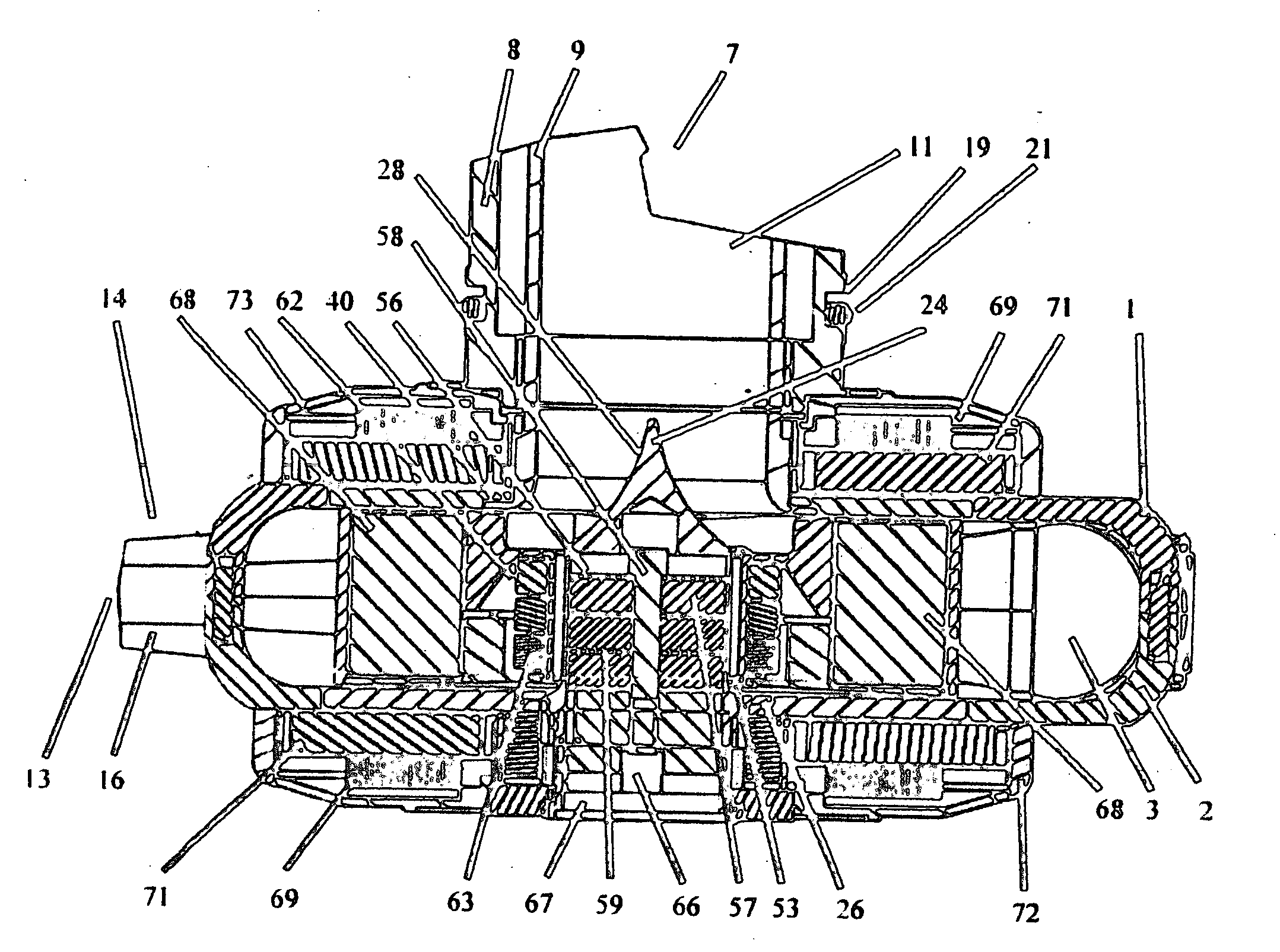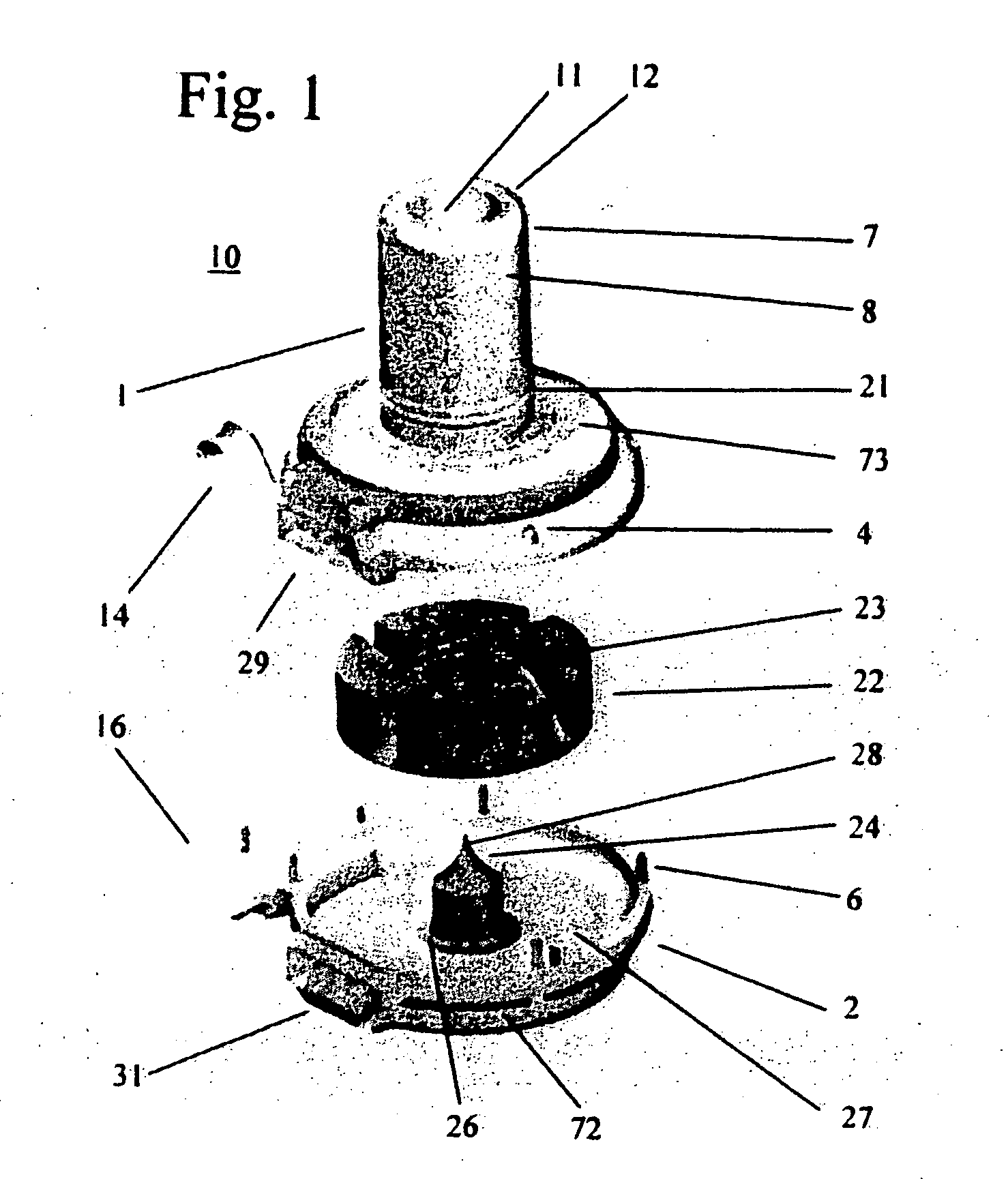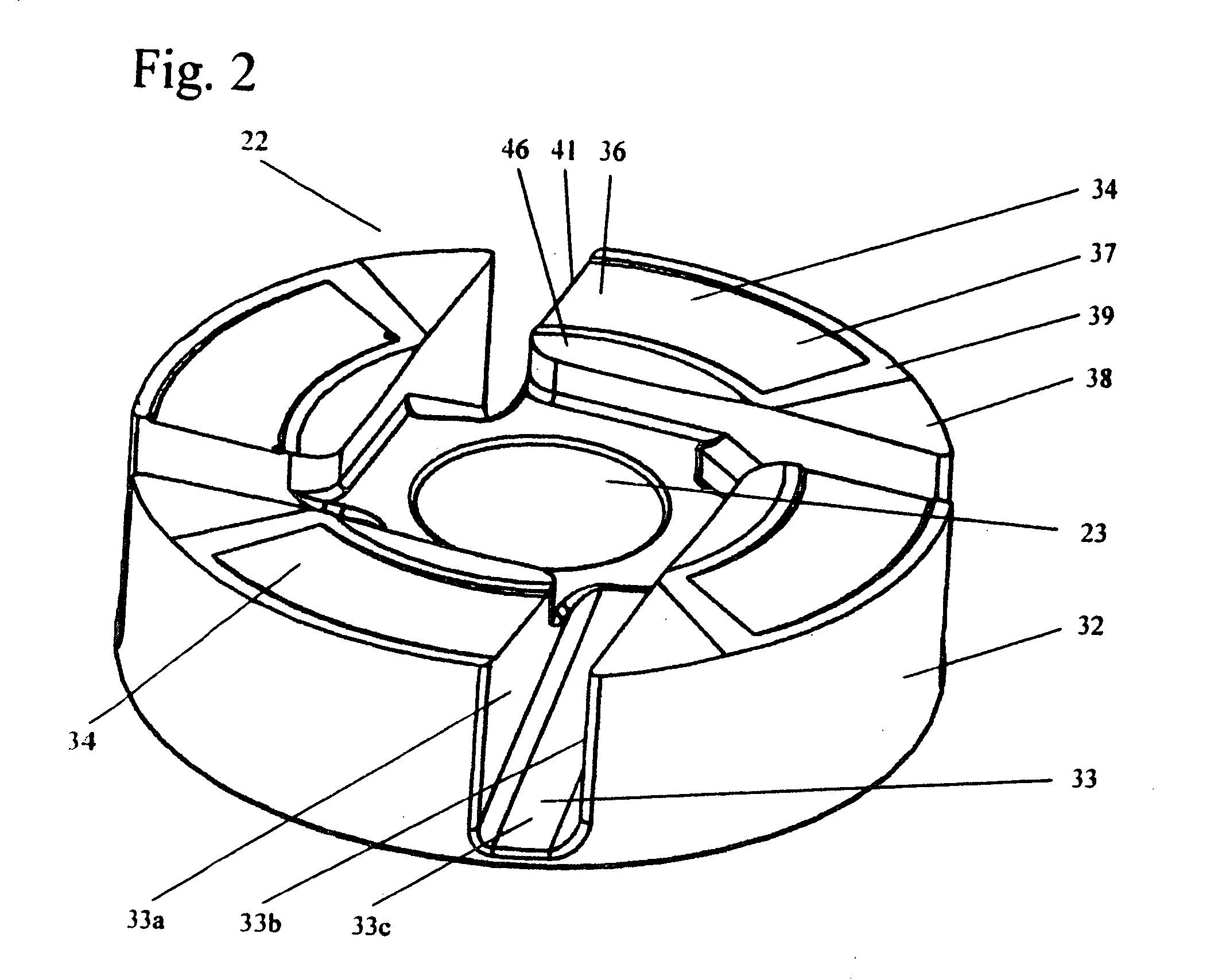Stabilizing drive for contactless rotary blood pump impeller
a technology of rotary blood pump and impeller, which is applied in the direction of piston pump, positive displacement liquid engine, prosthesis, etc., can solve the problems of thrombosis and sometimes hemolysis, large size and prone to mechanical wear, premature wear, and thrombosis of the blood, so as to facilitate the fit of the blood pump and improve the blood flow characteristics
- Summary
- Abstract
- Description
- Claims
- Application Information
AI Technical Summary
Benefits of technology
Problems solved by technology
Method used
Image
Examples
Embodiment Construction
[0033] In describing the embodiments of the present invention illustrated in the drawings, specific terminology is employed for sake of clarity. However, the present disclosure is not intended to be limited to the specific terminology so selected, and it is to be understood that each specific element includes all technical equivalents which operate in a similar manner.
[0034] Referring now to FIG. 1 there is shown a rotary blood pump 10 having a pump housing that consists of a substantially circular front or upper pump casing 1 and a substantially circular rear or lower pump casing 2 of equal diameter that interlocks with the upper pump casing 1 to form a closed pumping chamber between them. The configuration of the upper and lower pump casings is such that the assembled pump housing defines a substantially cylindrical pumping chamber 3 therein (FIG. 5). In one embodiment the pumping chamber has a displaced volume of 45 cc. The upper pump casing 1 may have a plurality of peripheral ...
PUM
 Login to View More
Login to View More Abstract
Description
Claims
Application Information
 Login to View More
Login to View More - R&D
- Intellectual Property
- Life Sciences
- Materials
- Tech Scout
- Unparalleled Data Quality
- Higher Quality Content
- 60% Fewer Hallucinations
Browse by: Latest US Patents, China's latest patents, Technical Efficacy Thesaurus, Application Domain, Technology Topic, Popular Technical Reports.
© 2025 PatSnap. All rights reserved.Legal|Privacy policy|Modern Slavery Act Transparency Statement|Sitemap|About US| Contact US: help@patsnap.com



